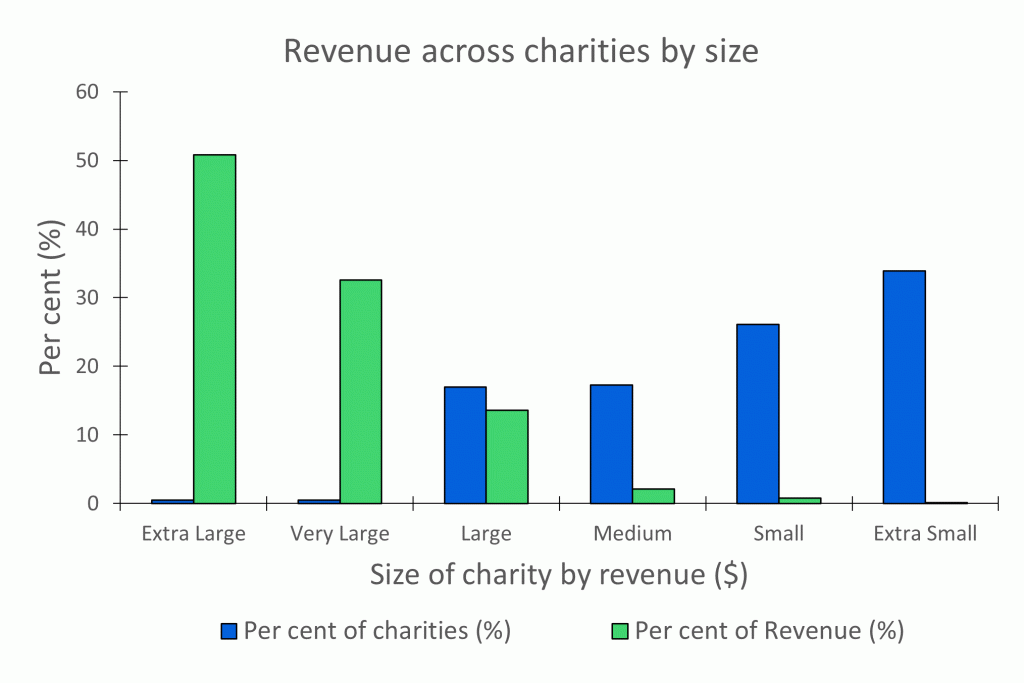
When it comes to charitable giving, the decision between donating to a large, well-established organization or a smaller, local charity can feel like navigating a labyrinth. On one hand, big charities often boast vast resources, extensive reach, and recognizable names. On the other, small charities offer intimacy, transparency, and the comfort of knowing your donation has a direct impact. So, how do you choose? Let’s dive into the pros and cons of each, and maybe by the end, you’ll have a clearer picture of where your hard-earned money could do the most good.

The Reach of Large Charities
Large charities have the advantage of scale. Their extensive networks allow them to reach across continents, tackling global issues with considerable force. Whether it’s providing disaster relief, funding medical research, or combating hunger on a global scale, these organizations have the manpower, the money, and the infrastructure to make a massive impact.
Take, for example, the Red Cross. They’re often the first on the scene in times of crisis, whether it’s a natural disaster or a humanitarian emergency. Their ability to mobilize quickly and effectively can’t be overstated. When you donate to a charity of this size, you’re contributing to a cause that has the potential to touch millions of lives. The sheer scale of their operations means that even a small donation can be part of something monumental.

Red Cross volunteers
However, this wide reach can be a double-edged sword. The larger the organization, the more diluted your contribution might feel. You may wonder if your $50 donation is just a drop in the ocean, lost amidst the torrents of funding these giants manage. And while they do tremendous work, sometimes their vast size means that individual donors can feel a little disconnected from the outcomes.
The Personal Touch of Small Charities
Small charities offer something that large charities often can’t: a personal connection. These are the organizations where your donation might fund a specific project or be earmarked for a particular need. You might even know the people who run the charity or see the direct impact of your contribution in your local community.
There’s something incredibly fulfilling about knowing that your donation helped repair the roof of the local animal shelter or bought supplies for the after-school program at the neighborhood community center. The impact feels tangible, and you’re more likely to see the results of your generosity firsthand.
Let me share a personal experience here. A few years back, I donated to a small charity in my hometown that runs a food pantry for low-income families. It wasn’t a large donation, but a few weeks later, I received a heartfelt thank-you note from the director, along with a photo of the newly stocked shelves. That simple gesture made me feel like my contribution truly mattered, something that’s hard to replicate with larger organizations.
Yet, the very thing that makes small charities appealing can also be their downfall. With fewer resources, these organizations might struggle with sustainability. They rely heavily on local support, and a single financial hiccup could spell disaster. Additionally, their smaller size might limit their ability to address issues on a larger scale, which can be frustrating if you’re hoping to contribute to a broader cause.
Transparency and Accountability
When it comes to transparency, both large and small charities have their own set of challenges. Large organizations are often subject to rigorous audits and must maintain detailed financial records, which can provide a level of accountability that’s reassuring to donors. You can easily access their annual reports, see where the money is going, and feel confident that your donation is being used wisely.
However, with size comes bureaucracy. Larger charities may have higher administrative costs, and it can be difficult to determine exactly how much of your donation is going directly to the cause versus being used for overhead. Some donors are put off by the thought of their money going towards salaries or marketing rather than directly to those in need.
Small charities, on the other hand, often operate with much lower overhead, and their transparency can be more straightforward. You might even have the opportunity to speak directly with the founders or volunteers to see exactly how your donation is being used. But with fewer resources and less scrutiny, there’s also a risk of mismanagement or lack of proper oversight, which can be concerning.
Innovation and Flexibility
Innovation is another area where the size of a charity can play a significant role. Large charities, with their vast resources, are often at the forefront of new approaches to solving global issues. They have the capacity to invest in research, develop new technologies, and implement large-scale solutions that smaller organizations simply can’t match.
Take the Bill and Melinda Gates Foundation, for example. Their work in eradicating diseases like malaria through large-scale vaccine distribution and research is something only a charity of their size could undertake. When you donate to a large organization like this, you’re contributing to cutting-edge solutions that have the potential to change the world.
However, this scale can also make large charities less flexible. With so many moving parts, it can be difficult for them to pivot quickly in response to new challenges. Bureaucracy can slow down decision-making processes, and innovative ideas may be stifled by the sheer size of the organization.
In contrast, small charities often excel in flexibility. With fewer layers of management and a more hands-on approach, they can adapt quickly to changing needs within their community. This agility allows them to respond to crises more nimbly and to implement creative solutions that larger organizations might overlook. But, of course, their smaller size might limit the scope of what they can achieve.
Emotional Connection and Donor Experience
Another factor to consider is the emotional connection you might feel to the cause you’re supporting. With small charities, that connection is often more immediate and personal. You might know the people running the organization, attend their events, or even volunteer alongside them. This closeness can make your giving experience more fulfilling and keep you more engaged with the cause over time.
On the flip side, large charities can sometimes feel impersonal. You might donate online, receive an automated thank-you email, and never hear from them again. While they do important work, the lack of personal connection can make the experience feel transactional rather than relational.
I remember volunteering for a small environmental charity that organized local clean-up events. After each event, the volunteers would gather for a potluck, sharing stories and getting to know one another. That sense of community made me more invested in the cause and more likely to contribute both my time and money. It’s hard to replicate that feeling with a large, faceless organization.
Impact and Sustainability
Finally, let’s talk about impact and sustainability. Large charities have the ability to create long-lasting change on a global scale. Their work can lead to systemic improvements, influencing policies and driving societal shifts. When you donate to these organizations, you’re contributing to efforts that have the potential to make a significant difference in the world.
But, as mentioned earlier, the sheer size of these organizations can make it difficult to see the direct impact of your donation. The work they do is vital, but it’s often spread across so many initiatives that your contribution might feel like a small piece of a very large puzzle.
Small charities, meanwhile, offer the opportunity to see your impact up close. Your donation might fund a specific project or provide essential services to a particular group of people. The immediate impact can be incredibly rewarding, especially if you’re passionate about a local cause. However, their limited resources can make sustainability a challenge, and the longevity of their impact might be less certain.
So, where does this leave us? The decision between donating to a large or small charity isn’t black and white. It depends on what matters most to you as a donor. If you’re looking to support a global cause with the potential for widespread impact, a large charity might be the way to go. But if you value personal connection, transparency, and the ability to see the direct impact of your donation, a small charity could offer a more fulfilling experience.
Ultimately, both large and small charities play crucial roles in the nonprofit landscape. Your choice comes down to aligning your values with the organization that best resonates with you. Whether you choose to support a global giant or a local hero, your donation makes a difference. And at the end of the day, that’s what really matters.



